Aristocratic portraits that once hung in the halls of a half-remembered dream, elaborate banquets you read about in a historical fiction novel, overgrown castle grounds hazily recalled from a travel brochure -- these images of the enchanted in-between are exactly what you'll find in Kimberly Brooks' new painting exhibition "I Notice People Disappear."
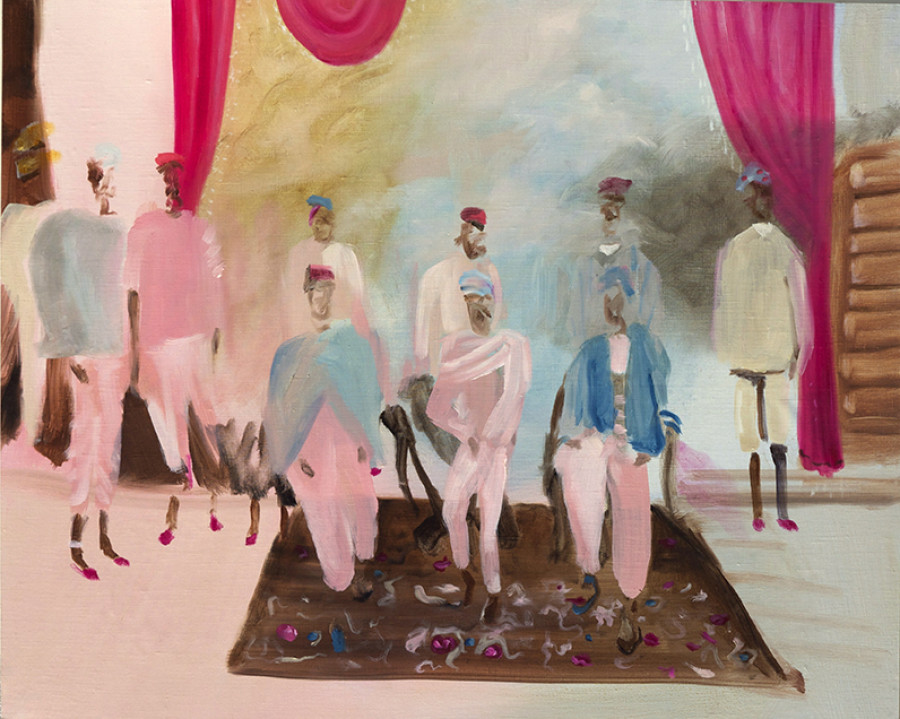
Pink Assembly
Like the title of the series, Brooks' paintings appear straightforward until contradictions and mischievous details float to the surface like spirits. At first, the somewhat figurative works appear to be depicting opulent scenes of exotic lands. Yet upon further contemplation you realize that a French gilded ceiling would never appear next to an authentic Persian rug, and why do all the portraits refuse to actually show faces? Like the ghostly figures that inhabit them, Brooks' decadent spaces have little place in reality. Like a memory transforming from thin air into something with weight and dimension, Brooks turns impossible visions into objects that can physically be sensed.
Part faulty history lesson, part seance, Brooks' works explore paint's uncanny ability to bridge spaces, times, memories, dreams and minds -- with the intoxicating ease of a lucid dream. We reached out to Brooks, the artist who founded the Huffington Post Arts in 2010, to learn more.
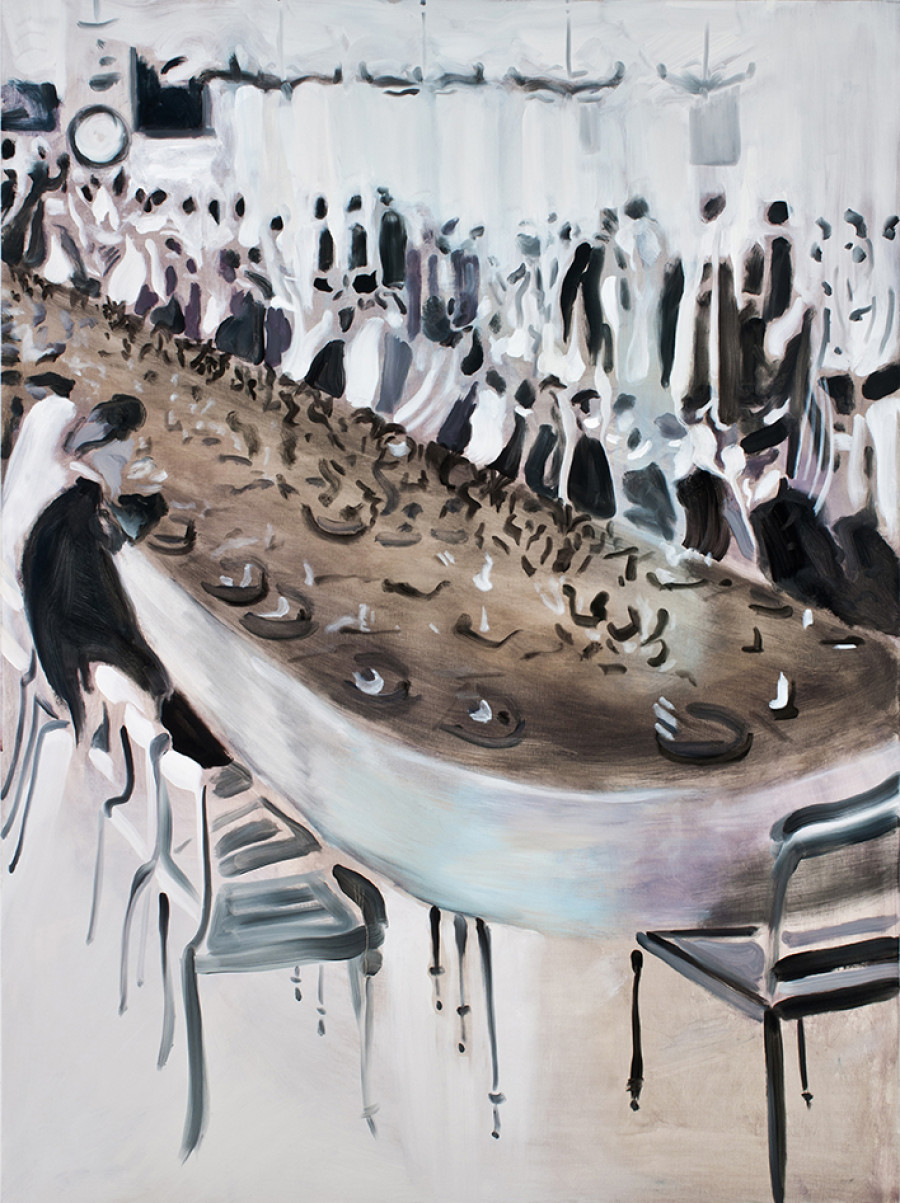
The Banquet
First I want to ask you about your palette. Your subject matter clearly depicts these fractured and indulgent memories but even the colors alone feel like they're being seen through the filter of memory. How did you go about creating your palette?
I work on a turquoise wooden table with a thick sheet of glass on top and the colors arrayed edges with the yellows on the lower right and then the rest of the shades moving along the outer rim counter clockwise. I’ve used the same system for so long I intuit what I need spatially like playing the piano. I mix normally vibrant colors to create muted tones, then the painting shimmers with cool and warm areas depending on how the combination gets imbalanced. Limiting the palette lent itself to the subject matter as a filter against literal interpretation.
Over the course of your artistic career you've gradually loosened your grip on figuration. Your last exhibition "Threads" explored how paint could drip and here we see paint in its feathery, almost ghostly form. Can you talk about your decision to handle paint in this way?
I once wrote an essay called “The Nudist and the Chemist” where I put art on a spectrum according to how it was rendered. I saw the chemist in a lab coat at one end, with the thinnest of pipette, a bunsen burner, and a notepad on one end, and a nudest on the other, swilling a glass of wine in one hand and slathering paint on a canvas with a palette knife. I always imagined stripping off that lab coat and reaching for that glass of wine. Letting go of that, and letting things -- walls, people, lamps, sky-- sort of merge together and become something else altogether, that’s what I sought this time.

Mahogany Lament
Your images transport the viewer to Indian temples, French Revolution-era castles, Baroque portraits, and many more times and places at the same time. Aside from other artworks, what influences fueled your imagery for these paintings?
When I first moved to Los Angeles, I moved into an old apartment building built in the 1920s and it had so many layers of paint on the window sills that I could create a thumbprint if I pressed hard enough, and they barely shut. I loved the feeling that I was living in two eras at the same time -- then and the Los Angeles when it was just being born. In my travels, I get the same feeling when I enter a medieval castle or ancient temple or cross an old bridge. I imagine what it must have been like when they all seemed new. It allows us to flicker on a time continuum between the now and the then. I wanted to create paintings, these historical settings and forgotten people, through a modern filter of abstraction.
In his catalogue essay Bruce Helander explained how in your works, "memory has a liquidity to it." What does this mean to you in relation to this series?
I was thinking of Proust and his idea of involuntary memory. He bites into a madeleine and not only recalls a memory from his own past but that of a friend of his dad’s who lived before he was born. It’s like a record needle skipping a track and playing a different song. I like the idea of being able to fall into other people’s memories, people that lived long ago.

Portrait of Arjun
Helander also speaks of your time as an English Major at UC Berkeley before becoming an artist. Is there a literary quality to these works and if so how would you describe it?
Yes, as an English Major, and lover of literature, I immerse myself in narrative, essentially historical works of fiction. That practice of envisioning how things looked, not in a literal sense, but through the blurry filter of the narrator’s description and my own imagination is how I created so many of the images for this exhibition.
If you could compare your painting process to a non-artistic activity -- like giving a massage or eating spaghetti or tuning a piano -- what would you choose?
That’s easy: creating oil paintings for an exhibition is like cooking a ten course meal, each with different steps and processes, with at least two to three main course and many side dishes. I lose myself while doing it and the smells start to fill the house with anticipation. Then when I'm done, I light the candles, get fresh flowers, turn on the music and then try to get the entire city, including art writers like you, the postman, and the lady at the flower shop, my family, all relatives and every friend I’ve ever had to cram inside and eat it with me.

Pink Salon
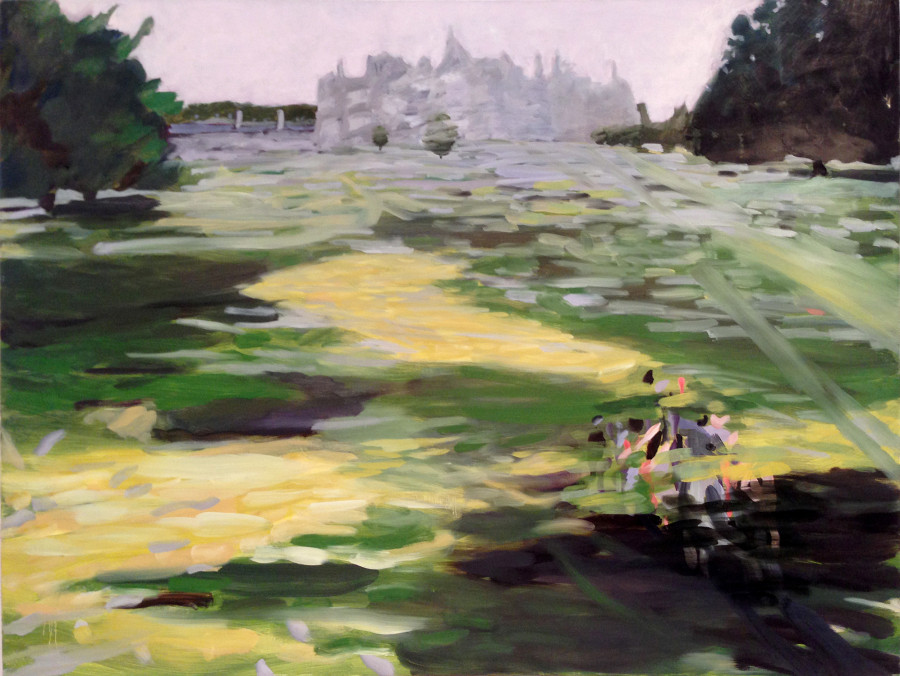
Castle Ground
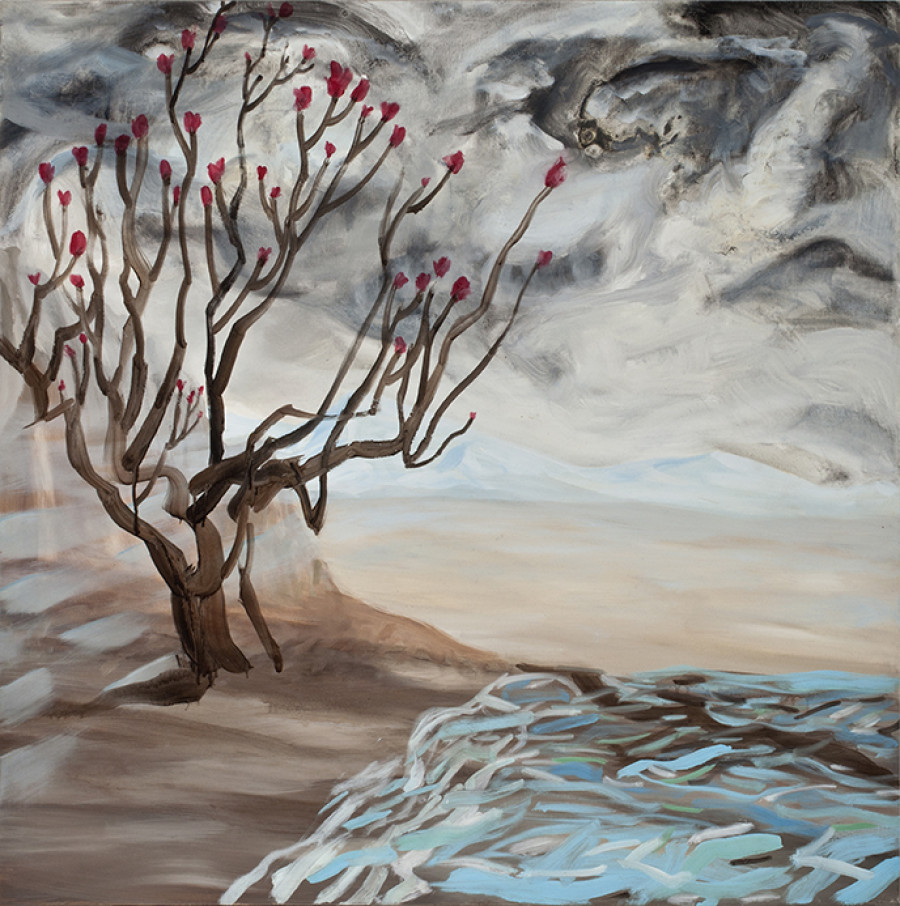
Tree River
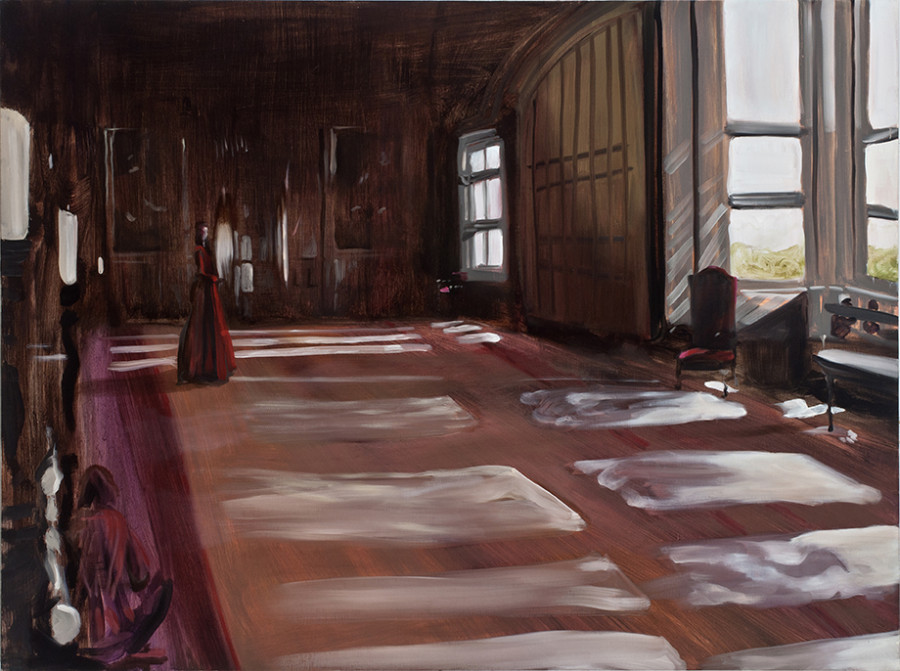
Parlour Room

Memory of the Banquet
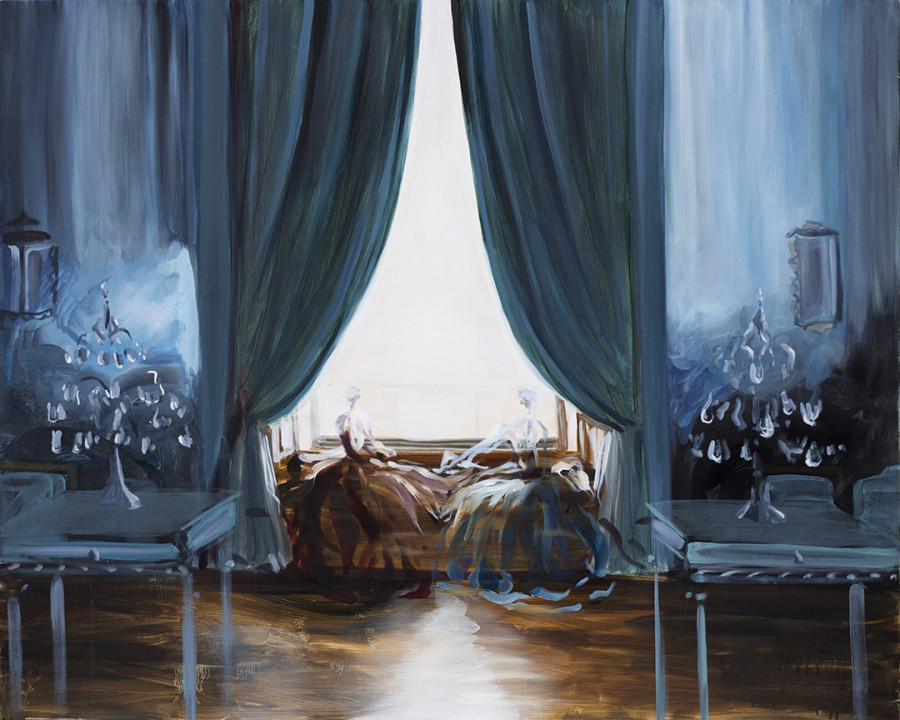
Blue Drawing Room
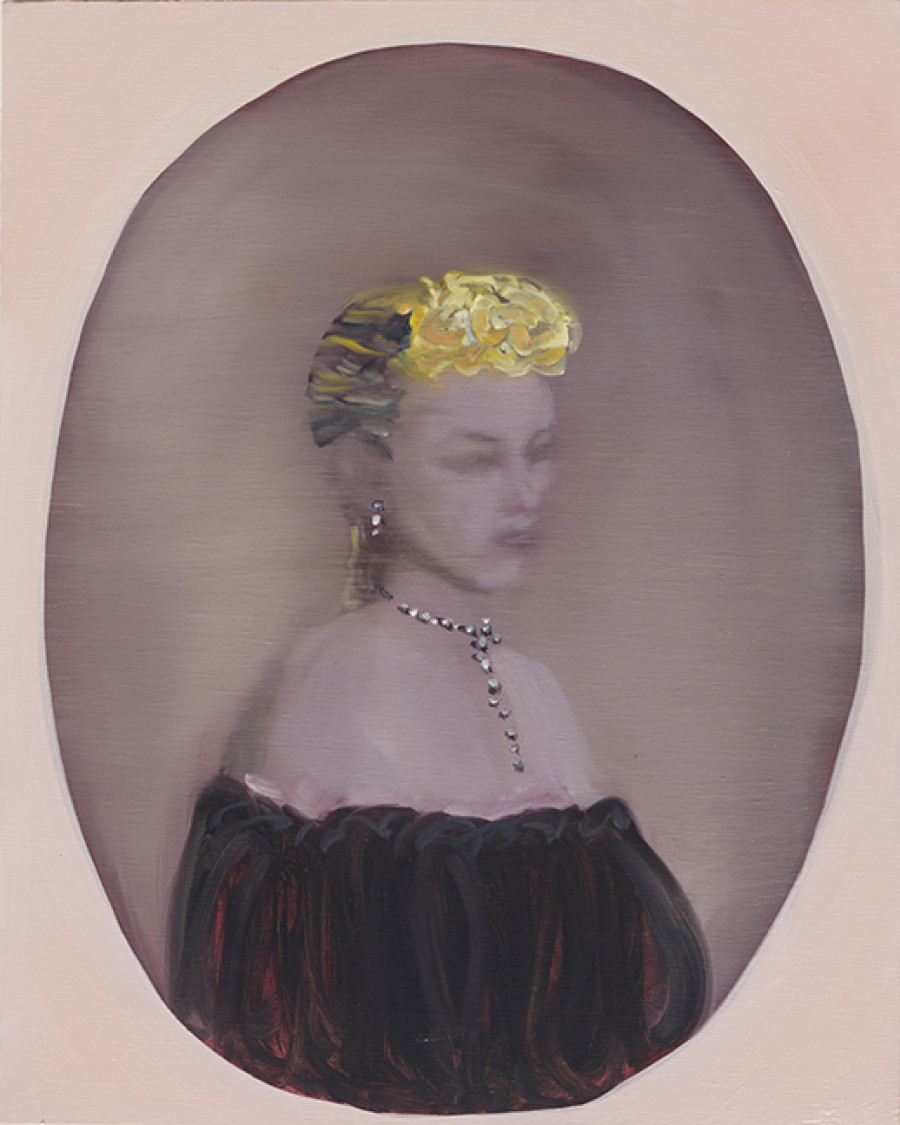
Portrait of Layla

Maiden Landscape
“I Notice People Disappear," new paintings by Kimberly Brooks, is on view through March 15, 2014 at Arthouse 429 in West Palm Beach, Florida. See her Exhibition Catalogue here and follow Brooks on Instagram @artistkimberlyb.